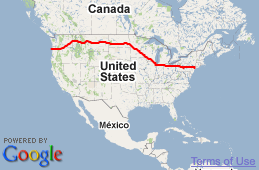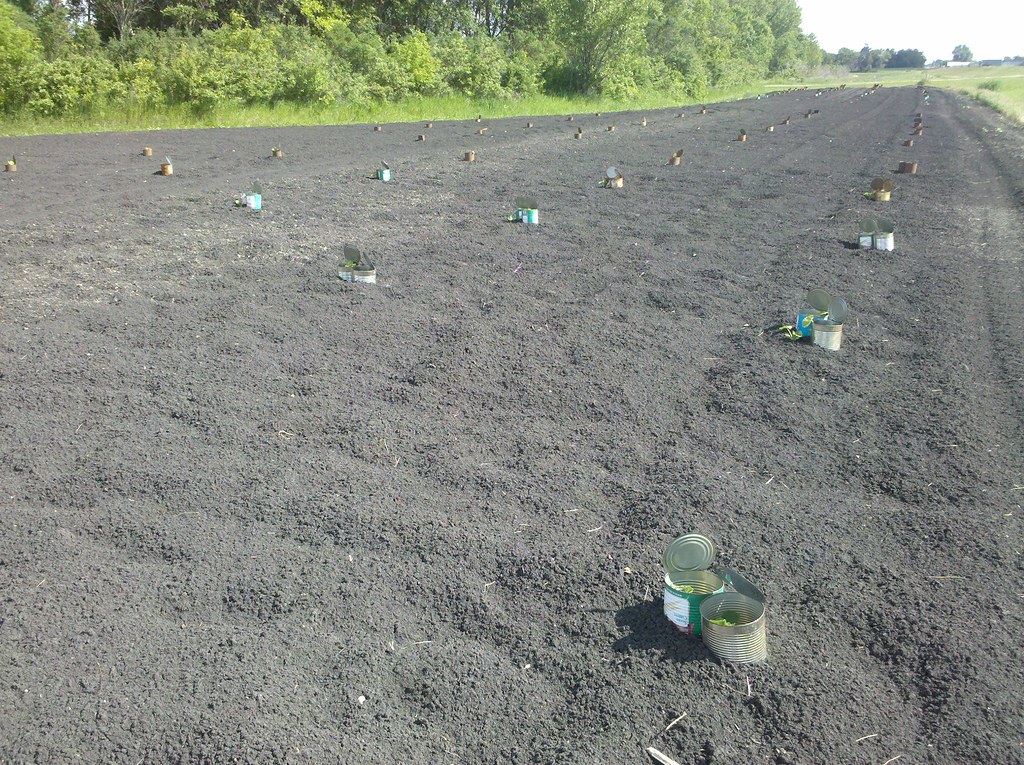I'm walking across America.
That's the idea, at least. I'm walking westward from New York City for nine months or so. If everything goes according to plan, I'll be in Oregon when the clock runs out. If nothing goes according to plan, maybe I'll end up in Peru or Mongolia or Pennsylvania. You can read all about the details of my trip if you're so inclined.
Email me at matt@imjustwalkin.com
Subscribe to my email list
Here's my progress so far:



I think they may be growing pumpkins and those are for cutworms, but could be wrong.
Yah for cut worms I would agree.. Great Photos on your site.. thanks for sharing your journey
This is probably a pumpkin patch ,or watermelon, or squash… some vine crop that needs “space” to grow… but a can garden it is at present…
The soil looks so black out there. Or is it just the way it comes across through the picture?
Apparently, Williams soil is the state soil of North Dakota. Perhaps this is the same as in Matt’s photo:
ftp://ftp-fc.sc.egov.usda.gov/NSSC/StateSoil_Profiles/nd_soil.pdf
http://www.statesymbolsusa.org/North_Dakota/ND-state-soil-williams.html
Two seeds and proper spacing….wow someone finally followed the instructions on the package.
Good Find Matt…..Pumpkins on this one. Kind of late no>
Too Funny!!!
Dirt is jet black on the east end of the state. It gets progressively brown/red as you go west. We are the bottom of an old lake bed on the east end. I’m not sure if that has anything to do with the color of the dirt, but it may.
It’s the bottom of ancient glacial lake agassiz. Then it became the tall grass prairie for thousands of years. The black soil is the remains of the priarie and is among the most fertile in the world.
I guess we now know why you haven’t found any tin cans alongside the road.
Very fertile soil, dark color…
This method, while I’ve never seen it before, protects the small starts and helps hold the moisture near the tender roots to help them get established. It’s odd to leave the sharp lids attached though. Hmmm…
I was thinking the same thing! The inner mom in me shouted, “The lids! the lids! You’re going to cut yourself!” LOL
katzien says it’s odd to leave the lids attached. Interesting though that most of the lids appear to be aligned in the same direction. Perhaps this is some shielding from intense sun? A little can-bana?
Play on words! hahahee This sounds like a possibility. When I transplanted some herbs this year, I used box lids to protect from afternoon sun.
I always wondered where canned vegetables came from.
lol
My husband’s grandparents would start seedlings in cans and plant the WHOLE CAN in the ground when it was properly started…. Lots of rusty plant roots I guess…
I love your site and your journey is inspirational
I am SUCH a New Yorker. I guess I knew less about farming than I thought. I thought cans were made in factories.